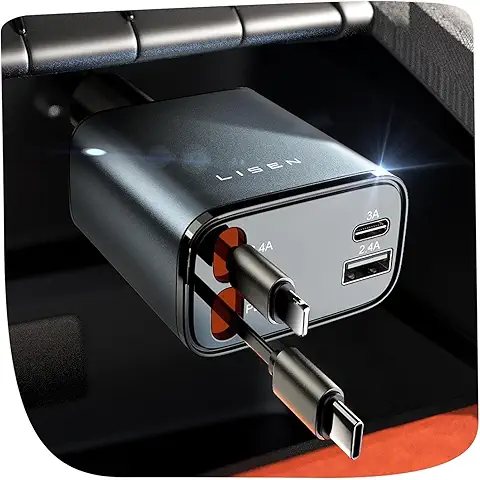These 10 Tips Will Help Make Your Pet Boarding Decision Easier


How to Choose the Right Boarding Facility for Your Pet with Confidence
Are you planning a trip but can’t bring your beloved pet along? If you don’t have a trusted friend, family member, or neighbor to care for your furry (or feathered) companion, pet boarding is likely your best option. However, choosing the right facility can feel overwhelming. You want a place where your pet will be safe, well-cared-for, and as comfortable as possible while you’re away.
Not all boarding facilities are created equal. While some are reputable, clean, and compassionate, others may lack proper standards for animal care and safety. Making the right choice requires more than just a quick Google search. To help you find a reliable, trustworthy, and professional pet boarding service, here are 10 essential tips every pet owner should know.
1. Ask for Recommendations from Trusted Sources
The best place to start is by asking people you trust. Your veterinarian is an excellent resource for local, reputable boarding facilities. They often have relationships with local kennels and understand which ones maintain the highest standards of care.

You should also reach out to friends, family members, and neighbors who own pets, especially those with animals similar to yours. First-hand recommendations can give you peace of mind and help you avoid facilities with poor reputations. Hearing about someone else’s positive experience is a good sign you’re on the right track.
2. Confirm the Facility Can Accommodate Your Specific Pet
Not every pet boarding facility accepts all types of animals. While most focus on dogs and cats, some might not be equipped to handle birds, rabbits, reptiles, or rodents. If you have a pet other than a dog or cat, make sure to verify that the facility:
- Accepts your type of pet
- Has staff trained to handle their specific care requirements
Additionally, ask about breed or size restrictions for dogs. Some facilities may not accept certain breeds, large dogs, or unspayed/unneutered animals.
3. Conduct Thorough Research and a Background Check
Even if a facility comes highly recommended, take the time to research it yourself. Look into their:
- Reputation through platforms like Google Reviews, Yelp, and Better Business Bureau
- Years of operation (longevity is often a positive sign)
- Memberships and certifications from reputable organizations like the International Boarding & Pet Services Association (IBPSA) or Pet Care Services Association (PCSA)
- Licenses and insurance: confirm they meet your city or county’s requirements
- Staff qualifications and ongoing training
Reading customer reviews : both positive and negative, can offer valuable insights into the experience you and your pet can expect.
4. Ensure They Can Meet Your Pet’s Unique Needs
If your pet requires special care, such as:
- A specific diet
- Daily medications
- Management of chronic health conditions
- Special sleeping arrangements
…it’s essential that the facility is fully capable and willing to accommodate these needs.
Be transparent about your pet’s health, temperament, and any behaviors that may require extra attention. Reputable facilities will appreciate your thoroughness.
5. Explore Available Services Beyond Basic Boarding
Some pet boarding services go above and beyond to keep pets happy, healthy, and entertained. If this interests you, look for facilities offering:
- Grooming
- Nail trimming
- Training sessions
- Dog daycare playgroups
- Bathing services
- Enrichment activities
These added perks can make your pet’s stay feel more like a vacation than simply being away from home.
6. Visit the Facility In-Person Before Booking
Never judge a boarding facility based solely on photos, videos, or website promises. Visit in person to get a true sense of the environment and ask questions. During your tour, pay attention to:
- Cleanliness: Is it well-maintained, odor-free, and hygienic?
- Ventilation & Temperature: Is it comfortable and well-lit?
- Space: Are pets provided with adequate room to move around? Are play areas sufficient?
- Staff Interaction: Do staff seem caring, knowledgeable, and attentive?
- Separation of Animals: Are cats and dogs housed separately? Can your multiple pets stay together?
- Outdoor Spaces: Are there secure, clean areas for exercise and play?
- Safety Measures: How is animal safety managed? Are there secure gates and proper supervision?
- Technology: Does the facility offer webcams for pet owners to check in virtually?
A reputable facility should welcome your visit and answer all your questions confidently.
7. Ask About Veterinary Support in Case of Emergencies
Emergencies can happen, even in the safest environments. Ask the facility how they handle medical issues:
- Is there an on-site veterinarian?
- Will they contact your regular vet if needed?
- Do they have emergency protocols in place?
- How and when will they notify you if your pet requires medical attention?
A facility with clear veterinary procedures shows professionalism and preparedness.
8. Understand Pricing and What’s Included
Pet boarding costs can vary widely based on location, services offered, and the level of care provided. Before committing, make sure you fully understand:
- How rates are calculated (daily, nightly, or per service)
- What’s included in the base price (feeding, exercise, medication administration)
- Any extra charges for special diets, additional playtime, grooming, or administering medication
Knowing upfront helps avoid unexpected costs when you pick up your pet.
9. Review Facility Policies and Requirements
Most reputable boarding facilities require pets to meet specific health and behavioral standards, such as:
- Up-to-date vaccinations (rabies, kennel cough, etc.)
- Flea and tick prevention treatments
- Spaying/neutering requirements
- Basic behavioral expectations (no aggression, socialization skills)
- Policies regarding drop-off and pick-up times
Understanding these requirements ensures you won’t face surprises or complications when booking.
10. Schedule a Test Run Before Your Trip
Before leaving your pet for an extended stay, consider booking a short test run, either a single day of daycare or one overnight stay. This helps your pet:
- Acclimate to the environment
- Become familiar with the staff
- Reduce anxiety during longer future stays
It also gives you peace of mind, knowing how your pet will adjust and how well the staff communicates with you during the stay.
Conclusion: Prioritize Comfort, Safety, and Trustworthiness
Choosing the right pet boarding facility takes careful consideration. Prioritize places that are transparent, professional, and focused on your pet’s wellbeing. Trust your instincts. If something feels off during your visit or conversations with staff, keep looking. Your pet deserves a safe, caring environment while you’re away. By following these 10 essential tips, you’ll feel confident knowing you’ve chosen the best option to keep your furry (or feathered) friend happy, healthy, and secure until you return








